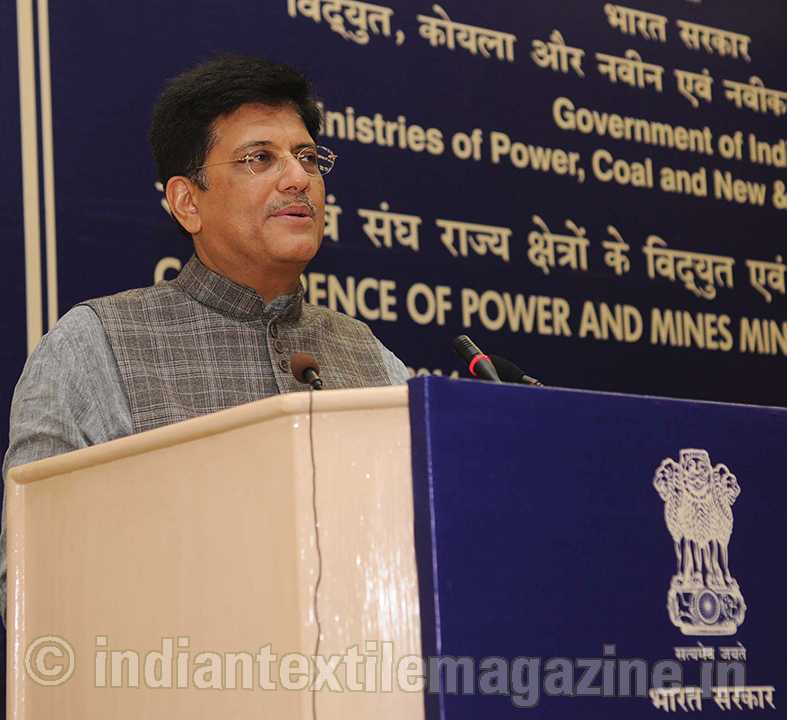Proposed total investment of Rs. 19,077 crore and a projected turnover is Rs. 184,917 crore with scope for employment generation of over 240,134.

The Selection Committee chaired by Secretary, Ministry of Textiles, U.P. Singh has selected 61 applicants under Production Linked Incentive (PLI) Scheme for Textiles. A total of 67 applications were received for the PLI scheme out of which 15 applications are under Part-1 and 52 applications are under Part-2.
Mr. Singh said that in the 61 applications approved the proposed total investment expected from the applicants is Rs. 19,077 crore and a projected turnover is Rs. 184,917 crore over a period of 5 years with a proposed direct employment of 240,134.
The scheme has two parts, Part 1 where minimum investment is Rs. 300 crore and minimum turnover required to be achieved for incentive is Rs.600 crore; and Part-2, where minimum investment is of Rs. 100 crore and minimum turnover required to be achieved for incentive is Rs. 200 crore.
Government approved Production-Linked Incentive (PLI) Scheme for Textiles products, namely MMF Apparel, MMF Fabrics and Products of Technical Textiles, for enhancing India’s manufacturing capabilities and enhancing exports with an approved financial outlay of Rs 10,683 crore over a five-year period. To further boost the growth of the sector, centre also removed the import duty of cotton.
The Notification for the scheme was issued on 24.09.2021. Operational Guidelines for Production Linked Incentive (PLI) Scheme were issued on 28.12.2021. Applications under PLI Scheme for Textiles were received through web portal from 01.01.2022 to 28.02.2022.
The 61 applicants selected under the scheme as of now by the Selection Committee are as under:
Scheme Part-1
1 Avgol India Private Limited
2 Cubatics Industries Private Limited
3 Goa Glass Fibre Ltd. (GGFL)
4 H P Cotton Textile Mills Limited
5 Himatsingka Seide Limited
6 Kimberly Clark India Private Limited (subject to formation of a new company for investment and
production under the Scheme as per existing guidelines)
7 Madura Industrial Textiles Limited
8 MCPI Private Limited
9 Paragon Apparel Private Limited
10 Pratibha Syntex Limited
11 Shahi Exports Private Limited
12 Shree Durga Syntex Pvt. Ltd.
13 Trident Limited
Scheme Part-2
14 AYM Syntex Limited
15 Kennigton Industries Pvt Ltd
16 MI Industries India Pvt Ltd.
17 Silkon Synthetics & Cotton Dyeing Pvt.Ltd.
18 Youngman Woolen Mills Private Limited
19 Autoliv India Pvt. Ltd.
20 Donear Industries Ltd.
21 Endurafab Pvt. Ltd. (EPL)
22 Fibrevault Nonwovens Private Limited
23 Mohini Health & Hygiene Ltd. (MHHL)
24 Niine Private Limited
25 Nobel Hygiene Private Limited
26 Obeetee Private Limited
27 Pan Tex Nonwoven Private
28 Rad Global Private Limited
29 Shruthi Financial Services Private Limited
30 Swara Baby Products Private Limited
31 Candex Filament Private Limited
32 Gainup Industries India Private Limited
33 Gokaldas Exports Limited
34 Indian Designs Export Private Limited
35 Infiiloom India Private Limited
36 Pearl Global Industries Limited
37 Sangam (India) Limited
38 Texport Industries Private Limited
39 Toray International India Private Limited
40 Teejay India Private Limited
41 SKAPS Industries India Private Limited
42 Artex Overseas Private Limited
43 Best Corporation Private Limited
44 Evertop Textile & Apparel Complex Private Limited
45 Ginza Industries Limited
46 Jalan Jee Polytex Limited
47 Kanodia Global Private Limited
48 Lotus Hometextiles Limited
49 N Z Seasonal Wear Private Limited
50 Microtex Processors Private Limited
51 Monte Carlo Fashions Limited
52 Rane TRW Steering Systems Private Limited
53 Shree Tirupati Balajee Agro Trading Company Private
54 Arvind Limited
55 Ginni Filaments Limited
56 Grand Handloom Private Limited
57 K G Denim Limited
58 Suchi Industries Limited
59 SVG Fashions Private Limited (subject to formation of a new company for investment and production under the Scheme as per existing guidelines)
60 SVP Global Textiles Limited
61 Techno Sportswear Private Limited
Stating that although India was the largest producer of cotton, Mr. Singh said that it was necessary to make our mark in man made fibres as well if we were to achieve the textile export target of USD 100 billion by 2030.
Elaborating on the immense scope and potential of technical textiles, Shri Singh said that sectors such as geotextiles need much more encouragement to improve use, demand and penetration and intensive research and development activities.